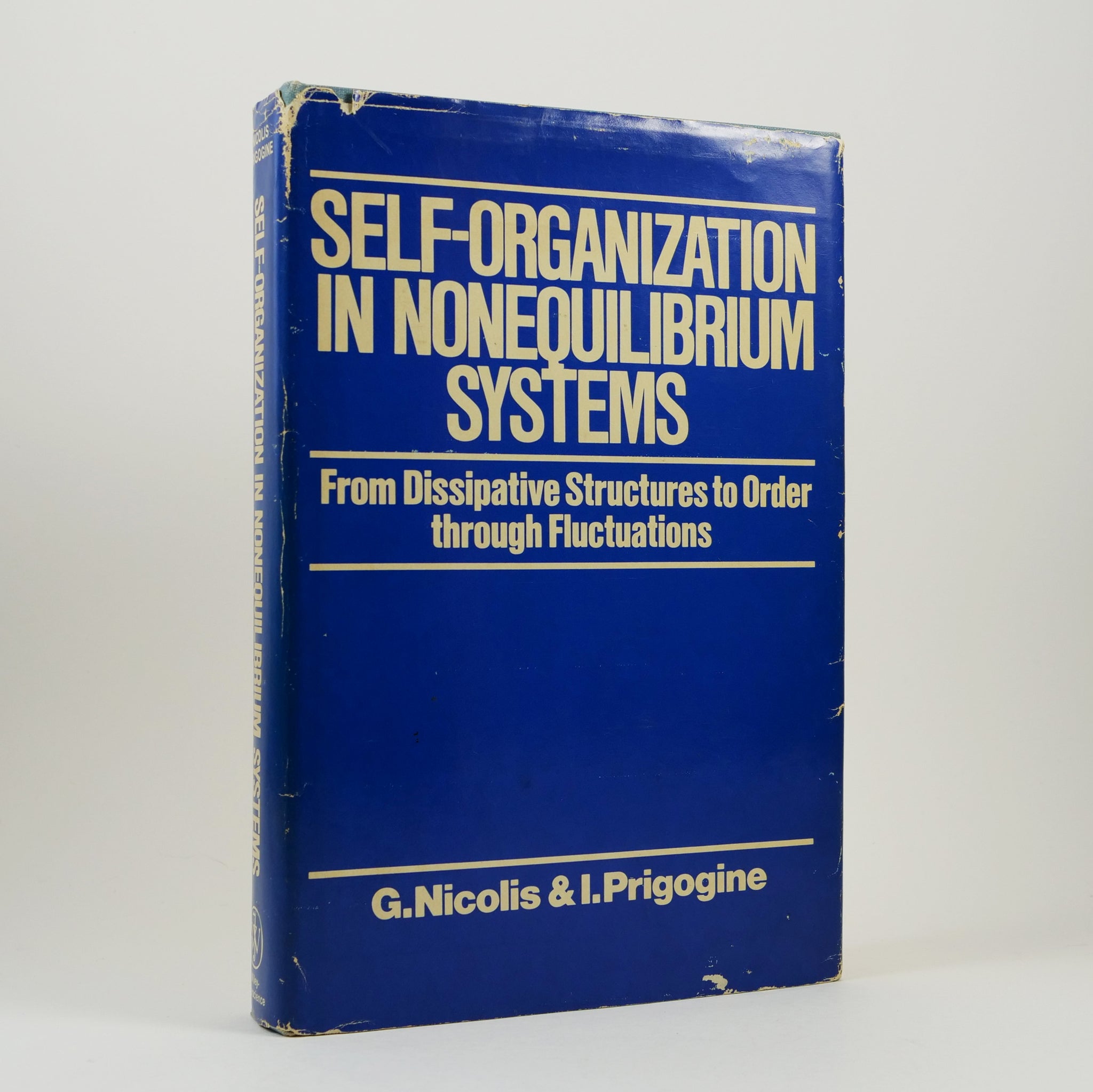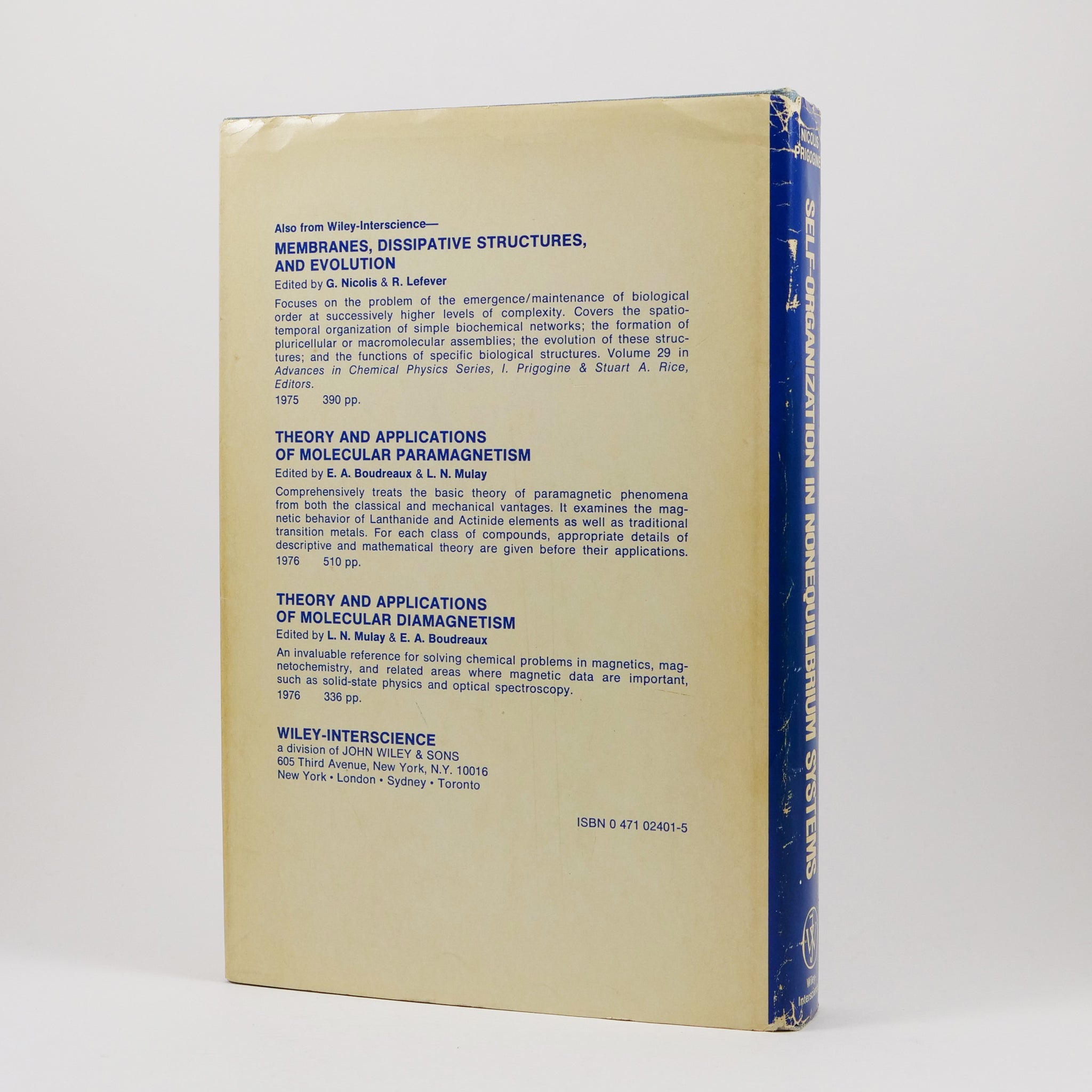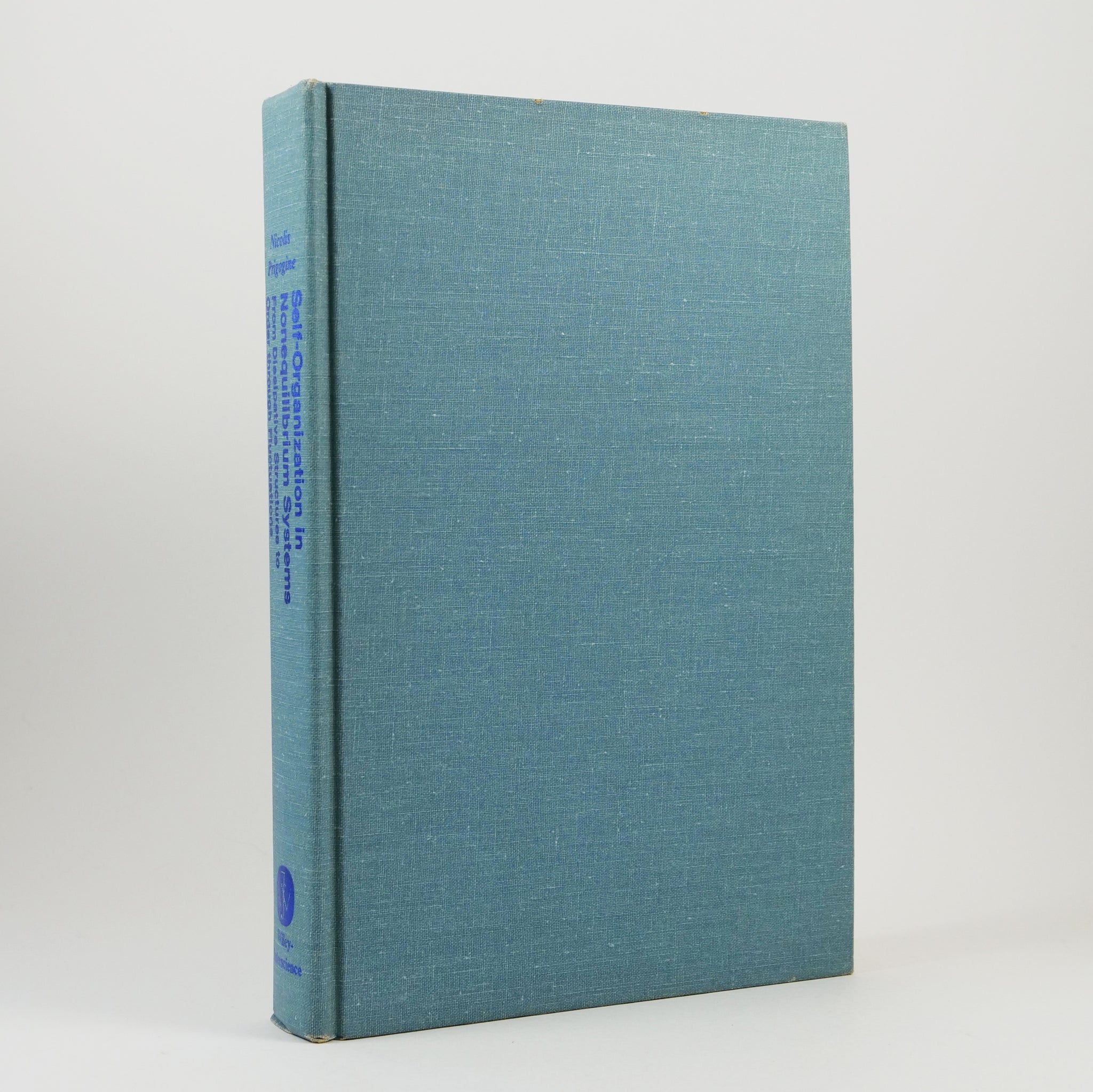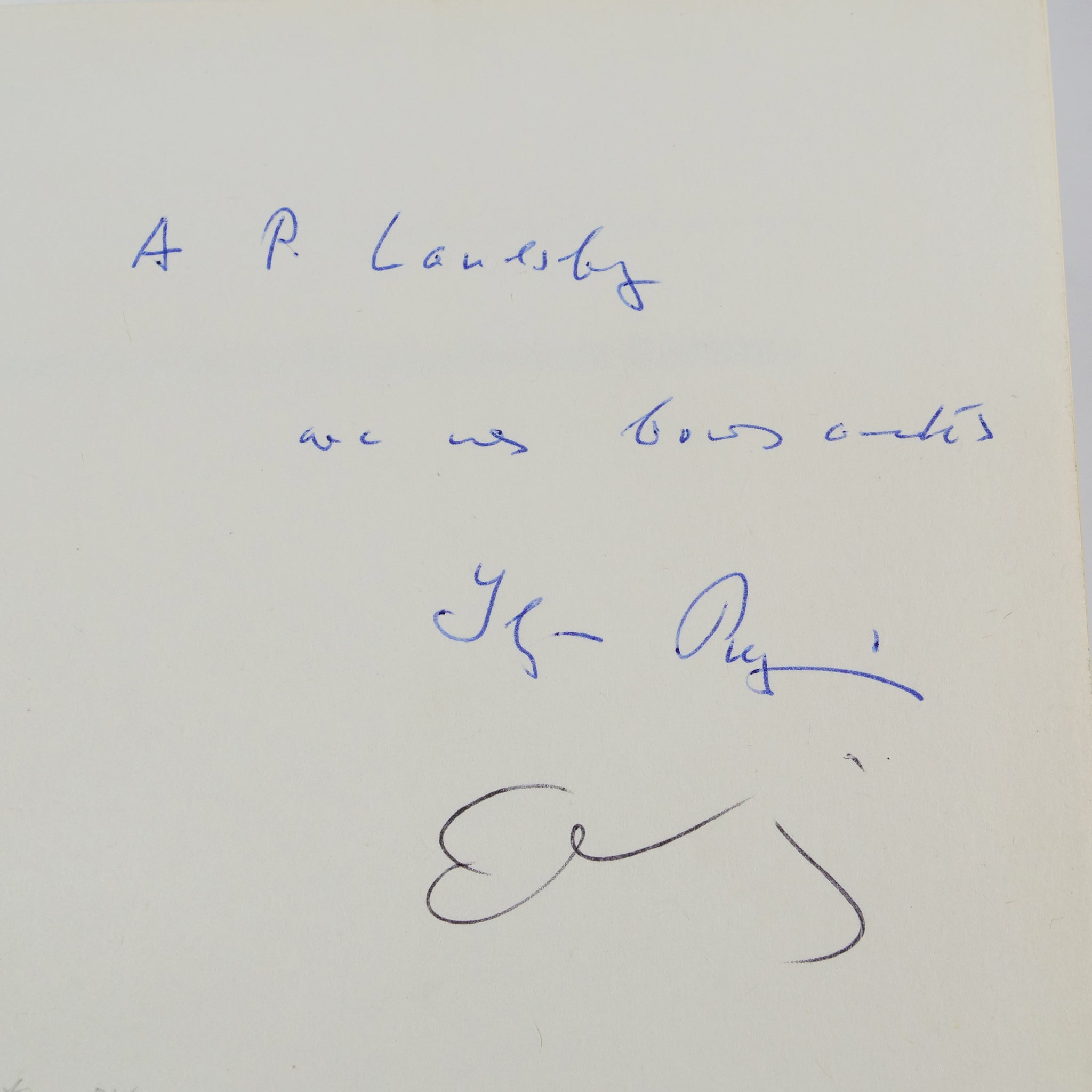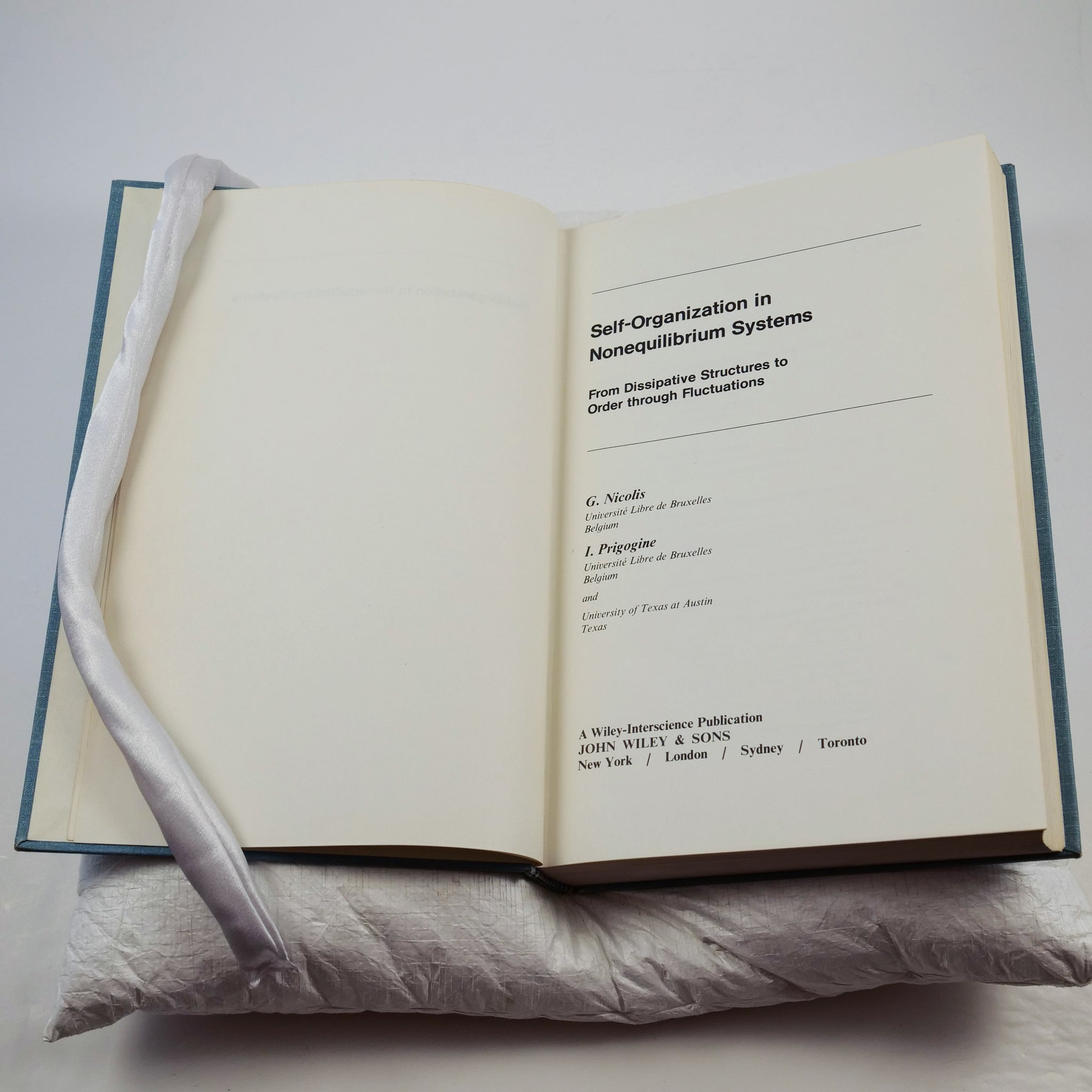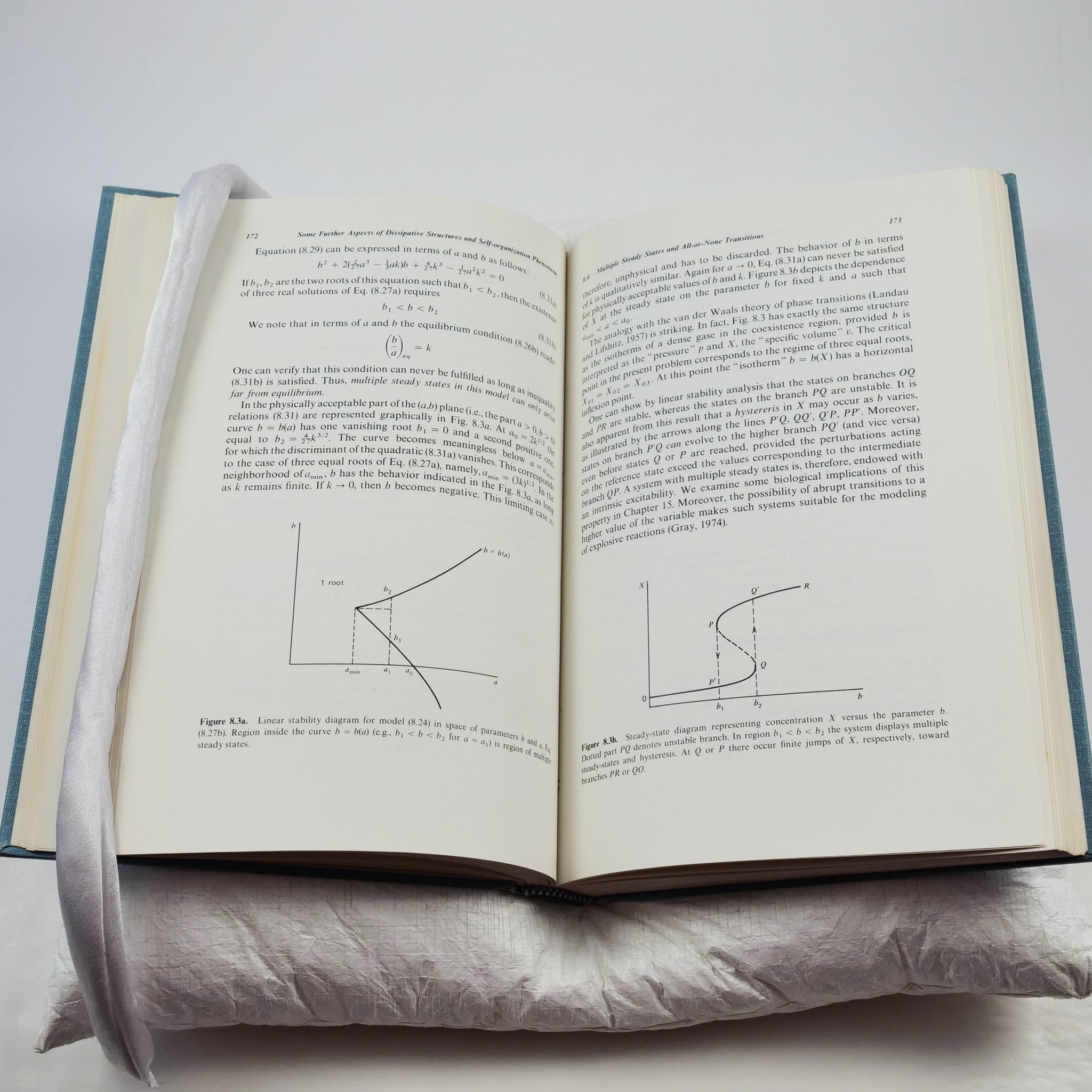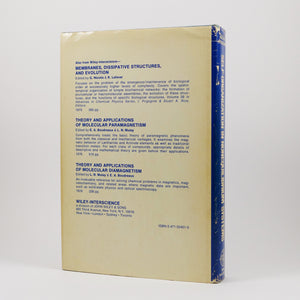G. Nicolis & I. Prigogine | Self-Organization in Nonequilibrium Systems
£500.00
-
First edition first printing. Presentation copy inscribed by Nobel Prize winner Ilya Prigogine, and also signed by co-author Grégoire Nicolis, for fellow physicist Peter Landsberg. Books signed by either Prigogine and Nicolis are uncommon. With a small pencilled notation of Landsberg’s on page 34 also repeated with a question mark on the front free endpaper.
Ilya Prigogine (1917-2003) is today one of the most well-known figures in the field of chaos theory. Though others before him, primarily Lars Onsager, had investigated the thermodynamics of irreversible processes (such as metabolic reactions in living things, or the boiling of an egg), it was Priogione who extended our understanding of them to systems that were far from equilibrium. His most important contribution was the discovery that in these systems chaos can lead to the development of ordered structures that only exist in conjunction with their environment. These he called “dissipative structures” to differentiate them from equilibrium structures (such as crystals) that can exist as isolated systems. “The most well-known dissipative structure is perhaps the so-called Benárd instability. This is formed when a layer of liquid is heated from below. At a given temperature heat conduction starts to occur predominantly through convection, and it can be observed that regularly spaced, hexagonal convection cells are formed in the layer of liquid. This structure is wholly dependent on the supply of heat and disappears when this ceases” (Noble Prize biography). The present volume covers all aspects of this new field, from the mathematical models underpinning it, to its application in chemistry, cell biology, and even the flows of energy across whole ecosystems.
Co-author Grégoire Nicolis (1939-2018) was also a leader in this new field of complex systems in statistical mechanics. His work — frequently in collaboration with Prigione — produced important “early discoveries in chaos theory” that “constitute part of its foundations as they brought forth deep connections on nonlinear dynamics and out-of-equilibrium processes in physics and chemistry at large” (Basios, “Grégoire Nicolis of the Founders of Complexity Science, a Recollection”, Nonlinear Phenomena in Complex Systems, vol. 23, no. 2, 2020, p. 102).
The recipient of this volume, Peter Landsberg (1922-2010), was a German Jewish refugee to Britain who earned his PhD in quantum mechanics at Imperial College London in 1949 and joined the faculties of the Universities of Cardiff and Southampton. “Landsberg was not solely interested in one branch of physics, he was interested in physics in general and this boyish enthusiasm took his research to all areas of theoretical work”, which included the quantum phenomenon known as bose condensation, the relationship between quantum mechanics and living things, thermodynamics, cosmology, and applications of solar energy. He is best known for his explication of “Landsberg efficiency”, the theoretical limits on how much solar power can be converted to electricity in a given situation (obituary in The Scotsman, May 23, 2010).
-
...From Dissipative Structures to Order through Fluctuations. New York: a Wiley-Interscience Publication, John Wiley & Sons, 1977.
Octavo. Original blue-grey cloth, titles to spine and ISBN on lower board in metallic blue, publisher’s device to upper board in blind. With the dust jacket. Diagrams and illustrations throughout the text. Cloth slightly rubbed at the tips, two small worn spots on the edge of the upper board. A very good copy in the jacket that is creased and worn with some closed tears and small chips.

